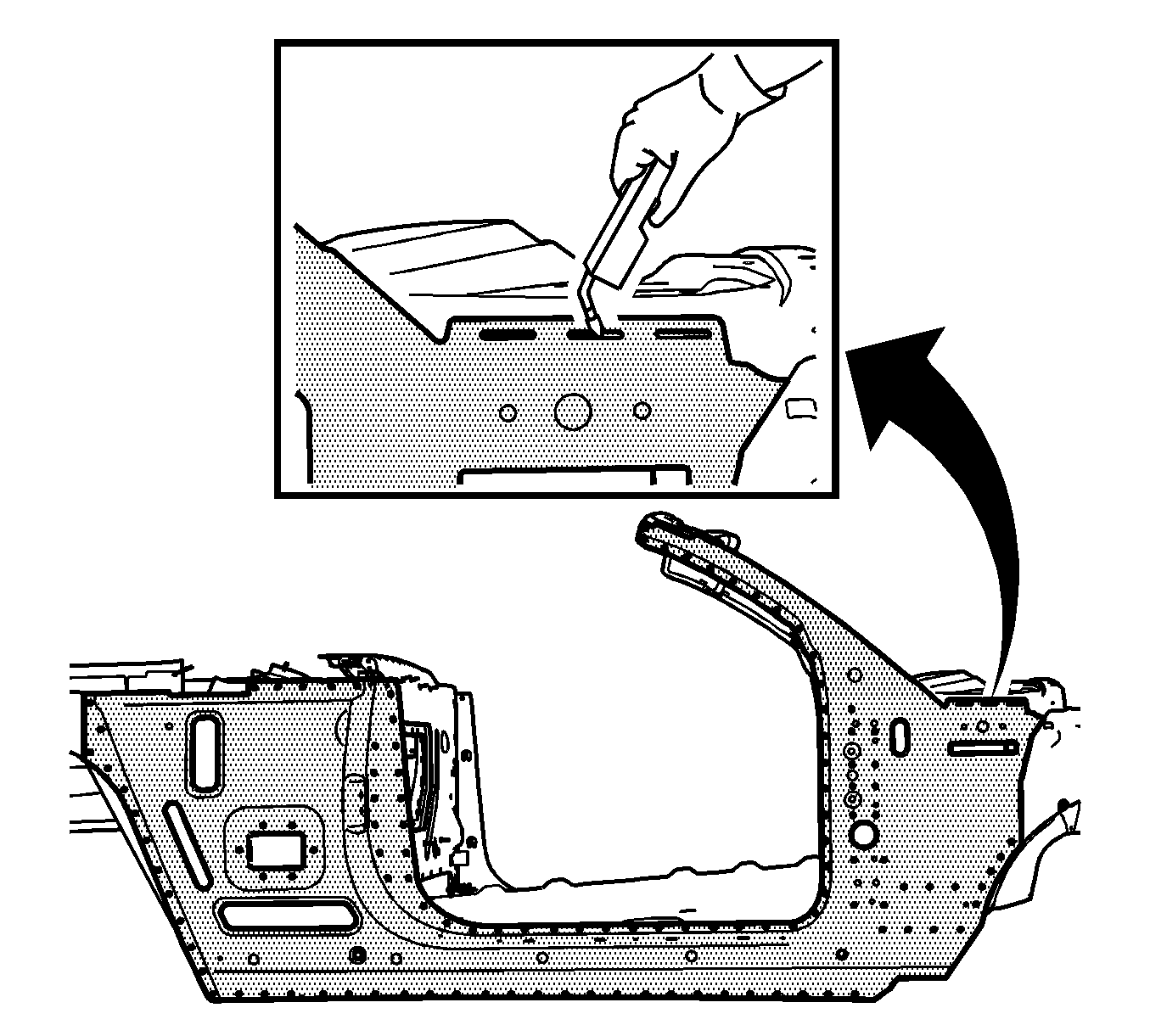Body Side Outer Panel Sectioning Rear Section
Removal Procedure
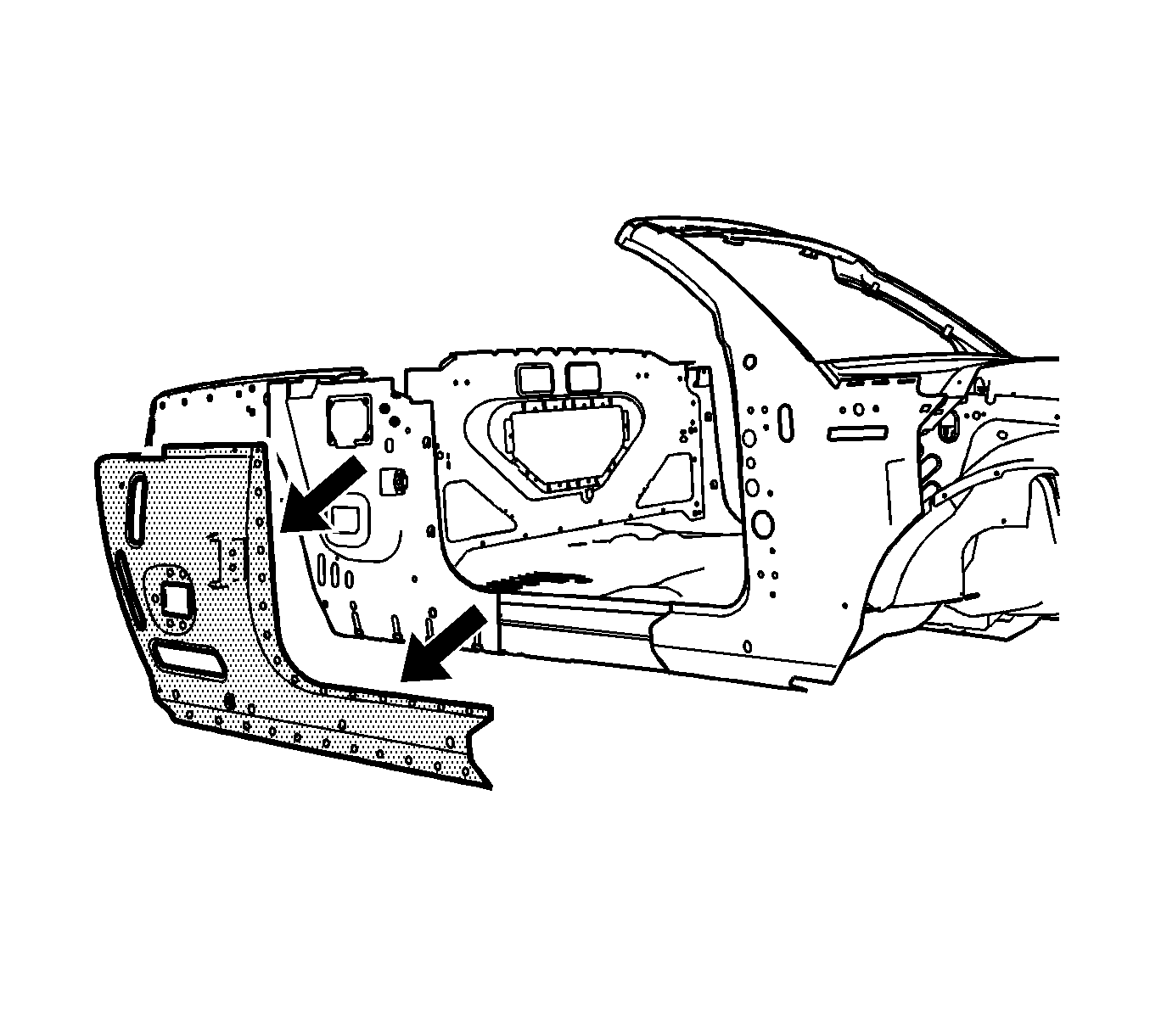
The replacement outer body side is serviced as a complete assembly. It is necessary to remove and replace the upper fender rails and the rear outer wheel house panel in order to replace the outer body side panel.
The upper fender rails and the outer wheelhouse panels are not included and must be ordered separately.
Sectioning procedures have been developed for the front or the rear of the body side panel as a cost-effective alternative to complete replacement.
- Disable the SIR system. Refer to SIR Disabling and Enabling in SIR.
- Disconnect the negative battery cable. Refer to Battery Negative Cable Disconnection and Connection in Engine Electrical.
- Remove all related panels and components including the outer wheel house panel. Refer to Rear Outer Wheelhouse Replacement .
- Repair as much of the damage as possible to factory specifications. Refer to Door Opening and Roof Stowage Dimensions in Dimensions - Body .
- Note the location and remove the sealers and anti-corrosion materials from the repair area, as necessary. Refer to Anti-Corrosion Treatment and Repair in Paint and Coatings.
- Cut the rocker panel within the shaded area (1) where sectioning is to be performed.
- Locate and drill out all factory welds on the outer body side, rearward of the sectioning cut location. Note the number and location of the welds for installation of the outer body side service part.
- Verify the existence of structural weld-through adhesive. Refer to Structure Adhesive Identification . If necessary use a chisel to separate the body side section from the adjacent panels.
- Remove the damaged outer body side section.
Caution: Refer to Approved Equipment for Collision Repair Caution in the Preface section.
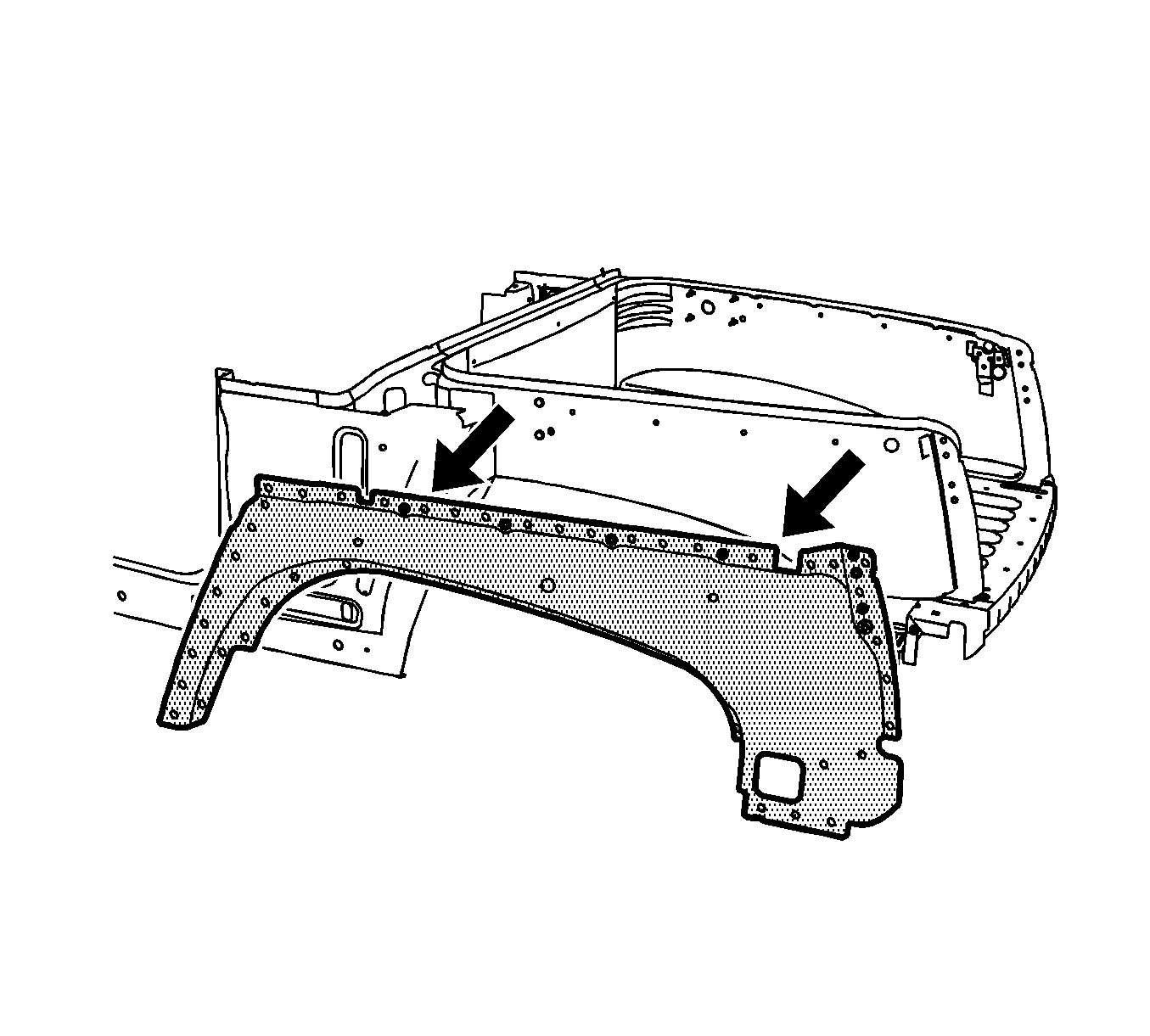
Important: When replacing the rear section of the outer body side assembly, first remove the rear outer wheel house panel. Depending on the extent of the damage, you may section the outer wheel house panel in the designated area, or replace the entire outer wheel house.
Caution: Refer to Foam Sound Deadeners Caution in the Preface section.
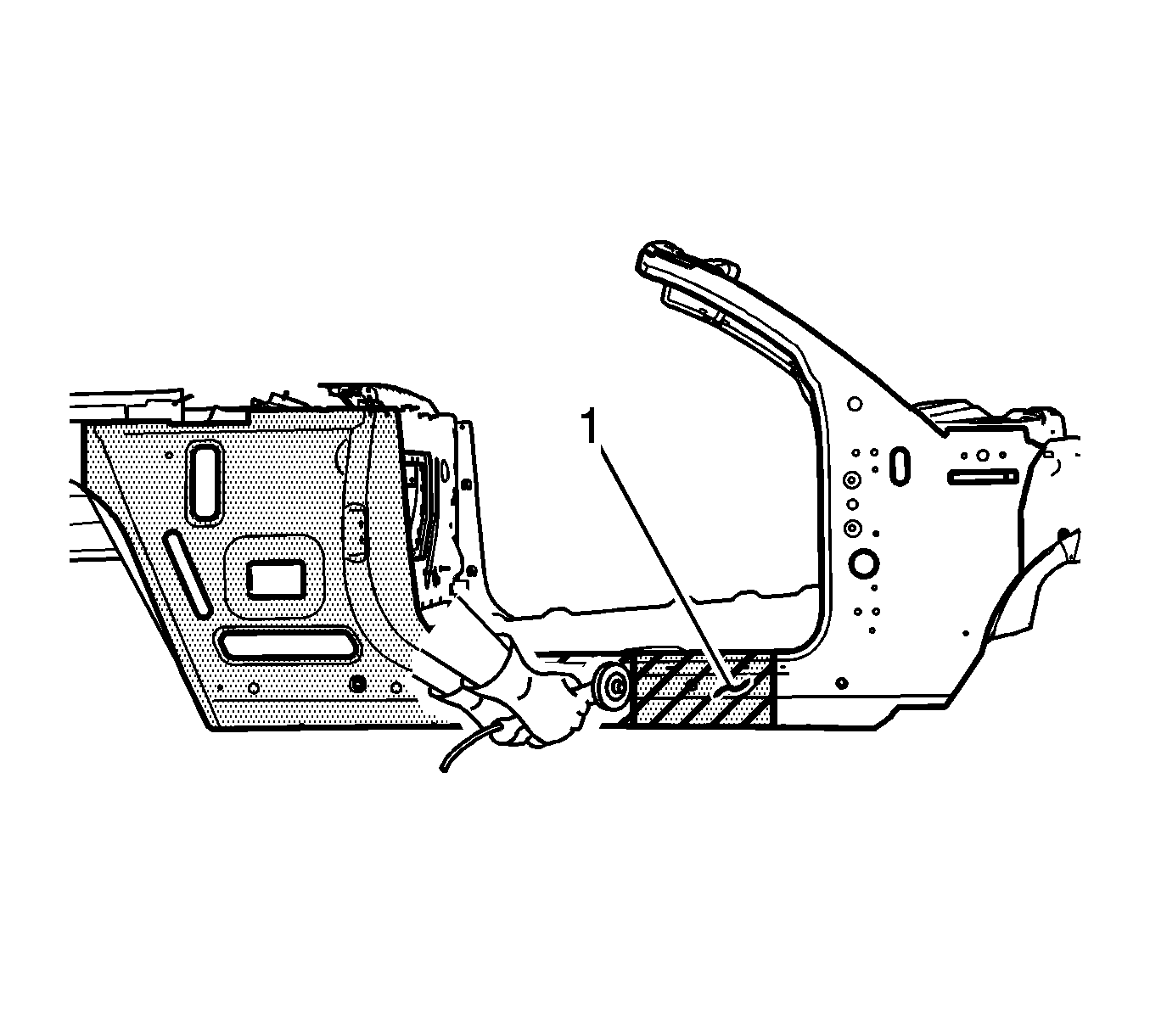
Important: Do NOT damage any inner panels or reinforcements.
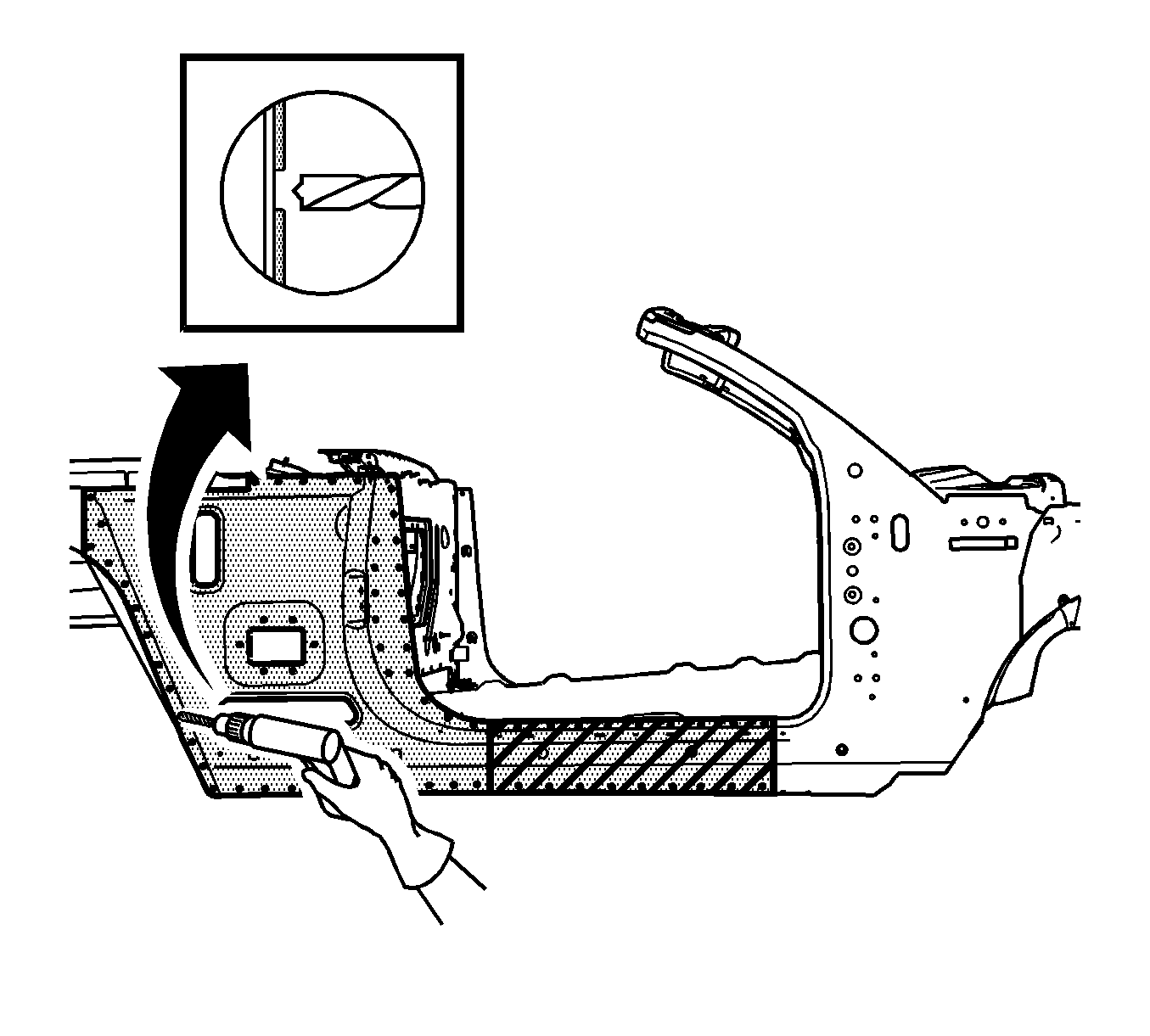
Important: Do NOT damage the inner panels or the reinforcements.
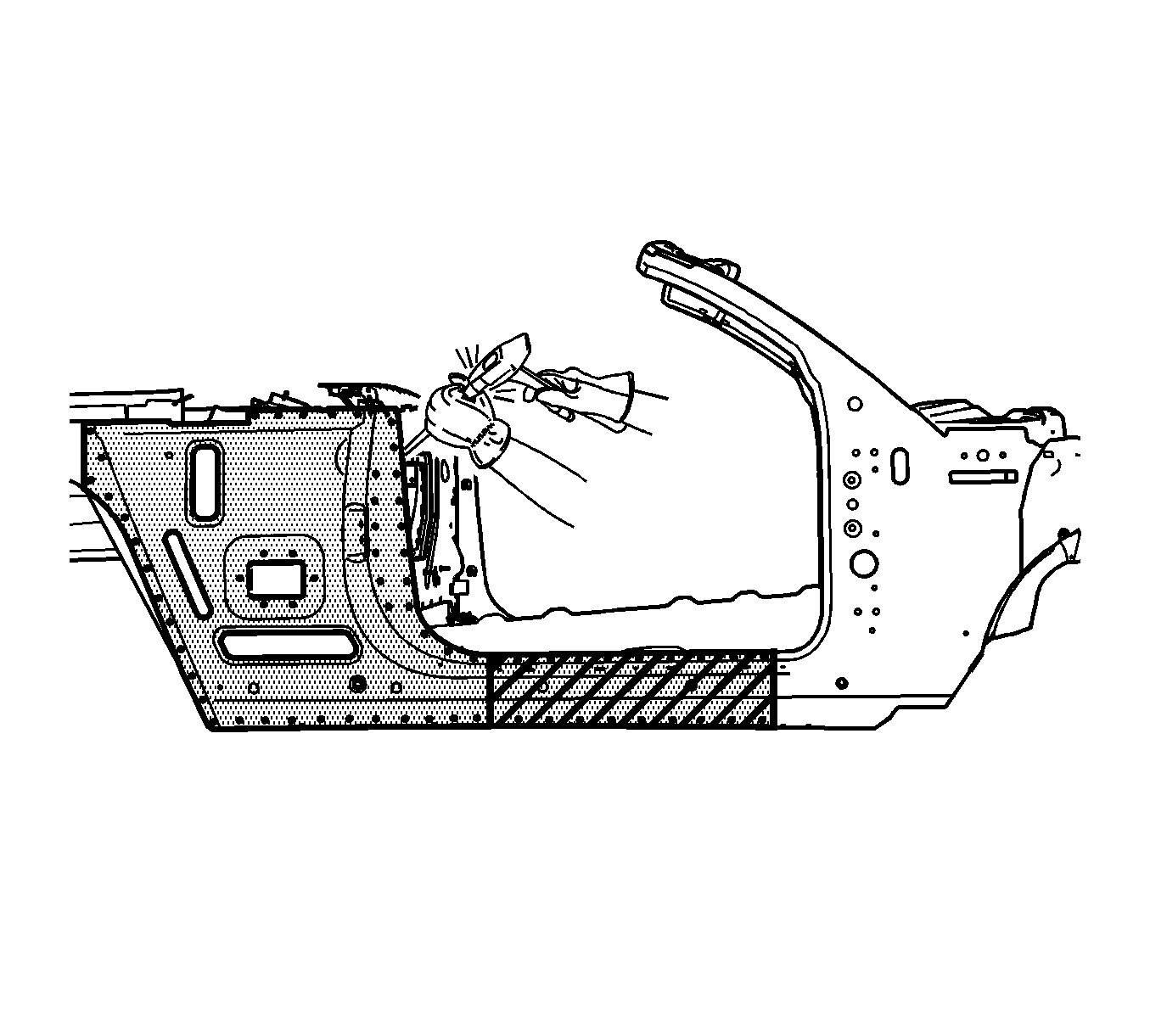

Installation Procedure
- Cut the replacement body side section in corresponding locations to fit the original panel. The sectioning joint should be trimmed to allow 1½ times the metal thickness at the sectioning joint.
- Create a 100 mm (4 in) backing plate (A) from the unused portion of the service part. Trim the backing plate as necessary to fit behind the sectioning joint.
- Drill 8 mm (5/16 in) plug weld holes in the service part as necessary in the locations noted from the original panel and along the sectioning cut.
- Replace the structural adhesive with an additional plug weld between the existing plug welds where necessary.
- Drill 8 mm (5/16 in) plug weld holes along the sectioning cut on the remaining original part. Locate these holes 25 mm (1 in) from the edge and spaced 40 mm (1½ in) apart.
- Prepare all attachment surfaces as necessary.
- Apply 3M® weld-thru coating P/N 05916 or equivalent to all mating surfaces.
- Fit the backing plate halfway into the sectioning joint, clamp and plug weld to the vehicle.
- Position the body side section. Refer to Door Opening and Roof Stowage in Dimensions - Body .
- Plug weld accordingly.
- Stitch the weld sectioning joint.
- Install all related panels including the outer wheelhouse panel. Refer to Rear Outer Wheelhouse Replacement .
- Clean and prepare all welded surfaces.
- Apply the sealers and anti-corrosion materials to the repair area, as necessary. Refer to Anti-Corrosion Treatment and Repair in Paint and Coatings.
- Paint and repair the area. Refer to Basecoat/Clearcoat Paint Systems in Paint and Coatings.
- Install all related components.
- Connect the negative battery cable. Refer to Battery Negative Cable Disconnection and Connection in Engine Electrical.
- Enable the SIR system. Refer to SIR Disabling and Enabling in SIR.
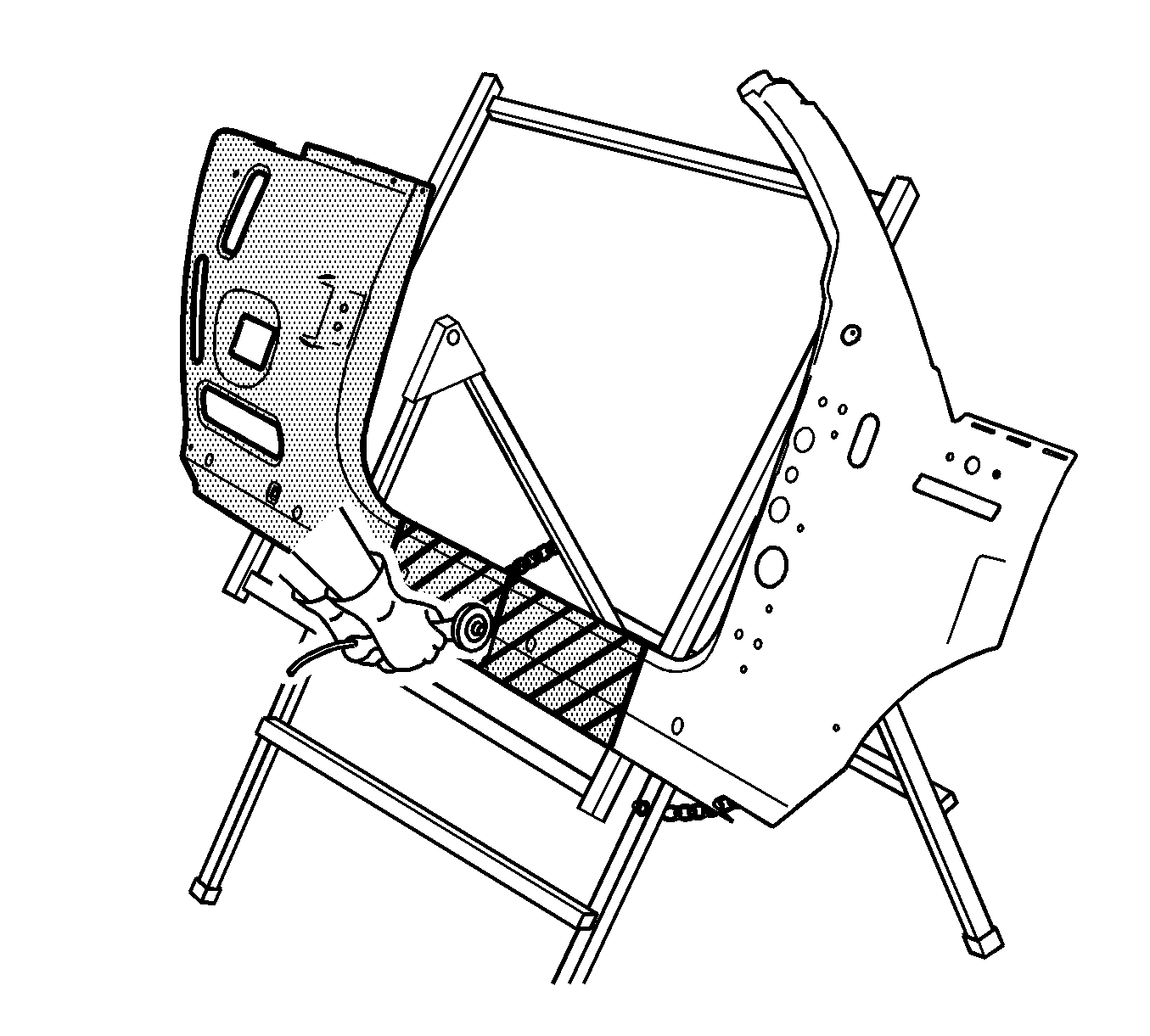


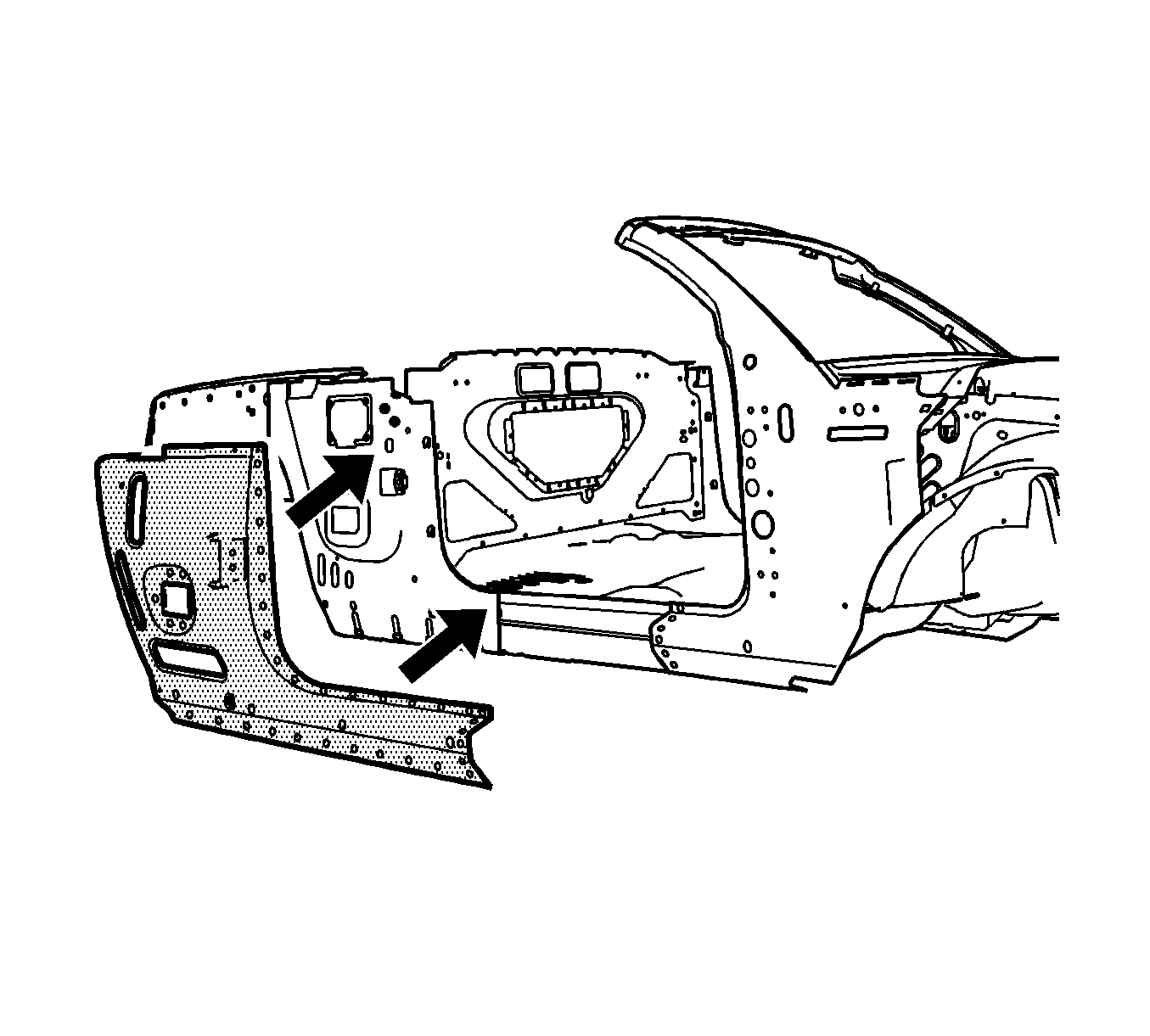
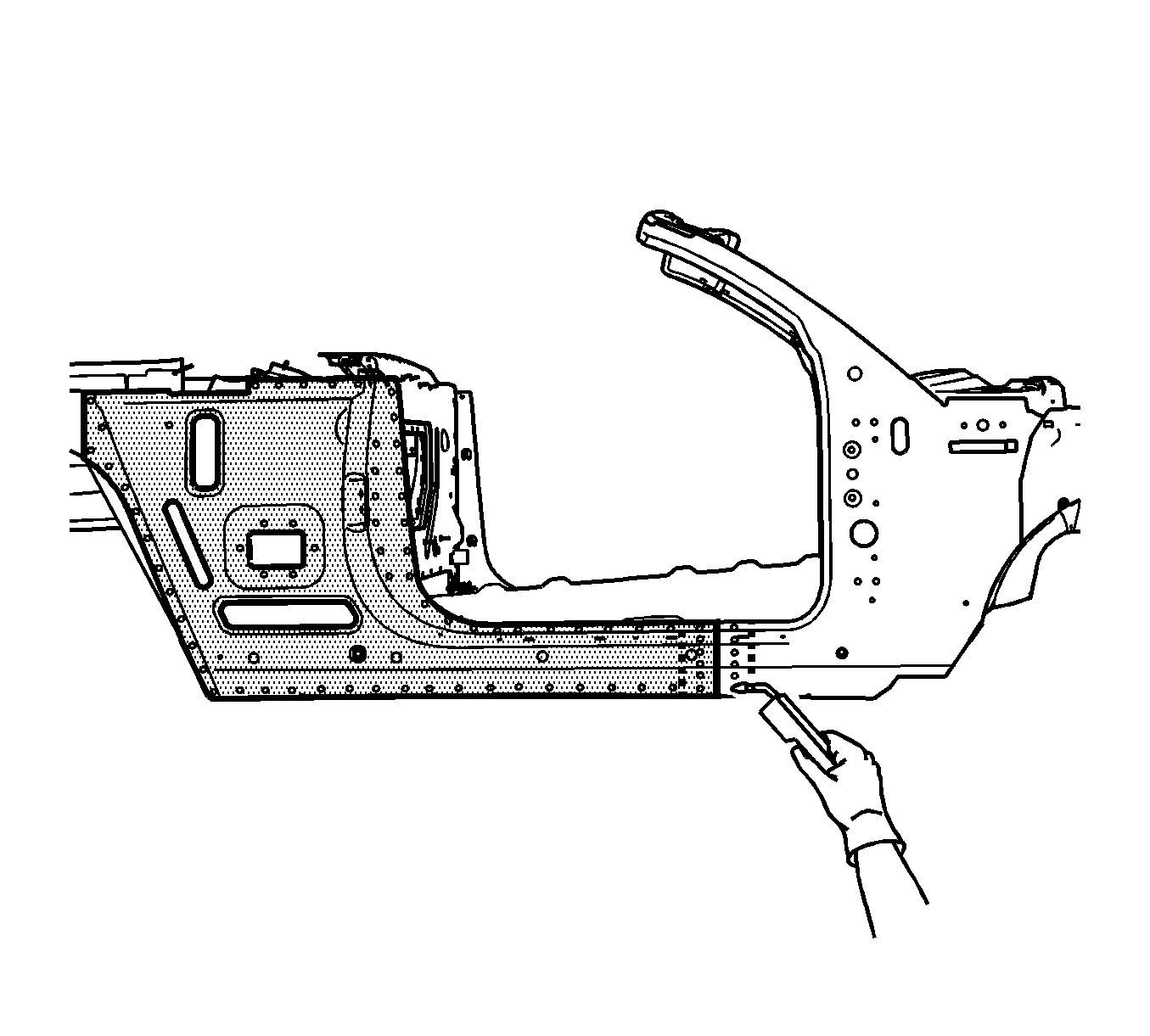
Important: To create a solid weld with minimum heat distortion make 25 mm (1 in) stitch welds along the seam with 25 mm (1 in) gaps between them. Then go back and complete the stitch weld.
Body Side Outer Panel Sectioning Front Section
Removal Procedure
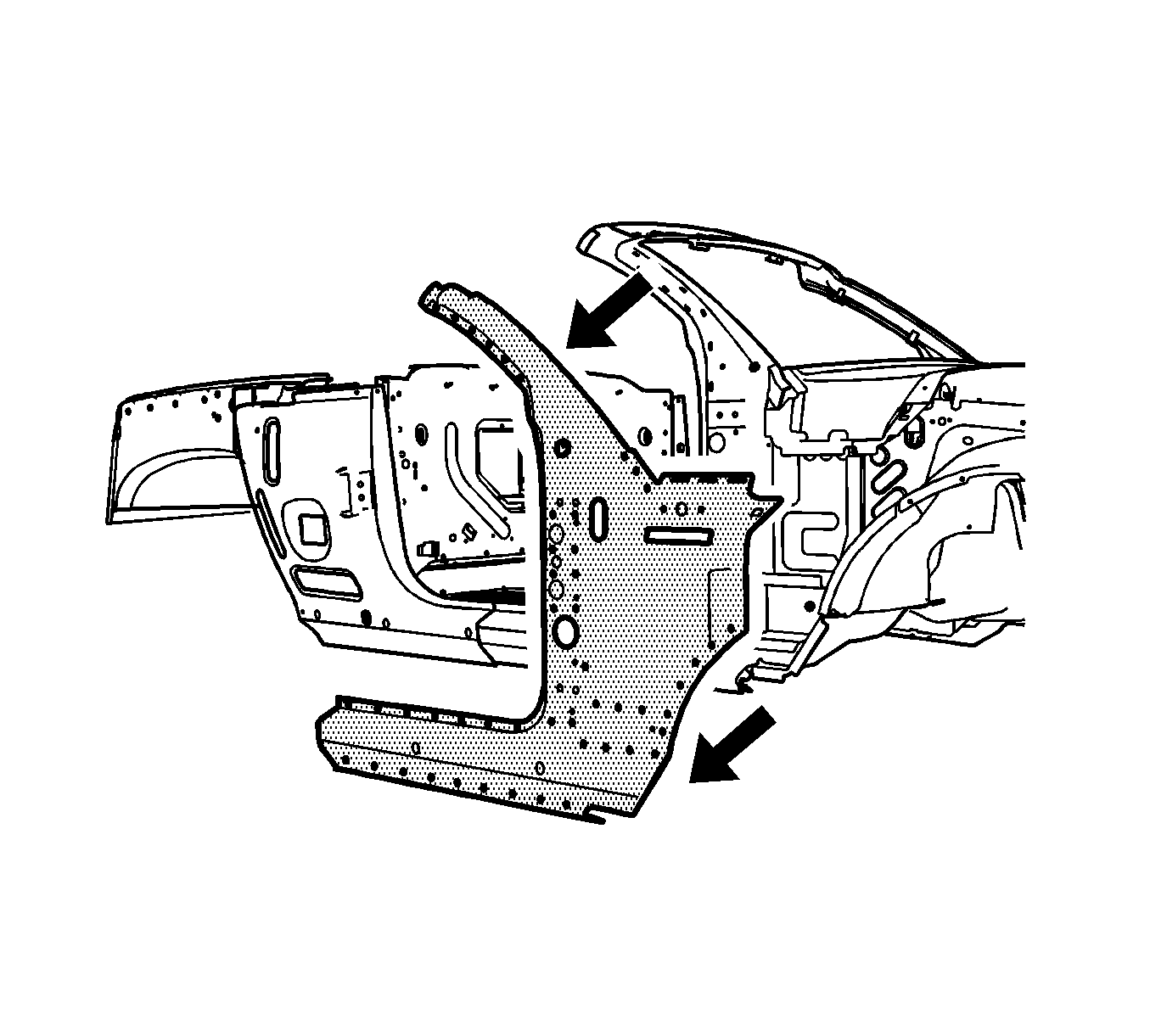
The replacement outer body side is serviced as a complete assembly. It is necessary to remove and replace the upper fender rails and the rear outer wheel house panel in order to replace the outer body side panel.
The upper fender rails and the outer wheelhouse panels are not included and must be ordered separately.
Sectioning procedures have been developed for the front or the rear of the body side panel as a cost-effective alternative to complete replacement.
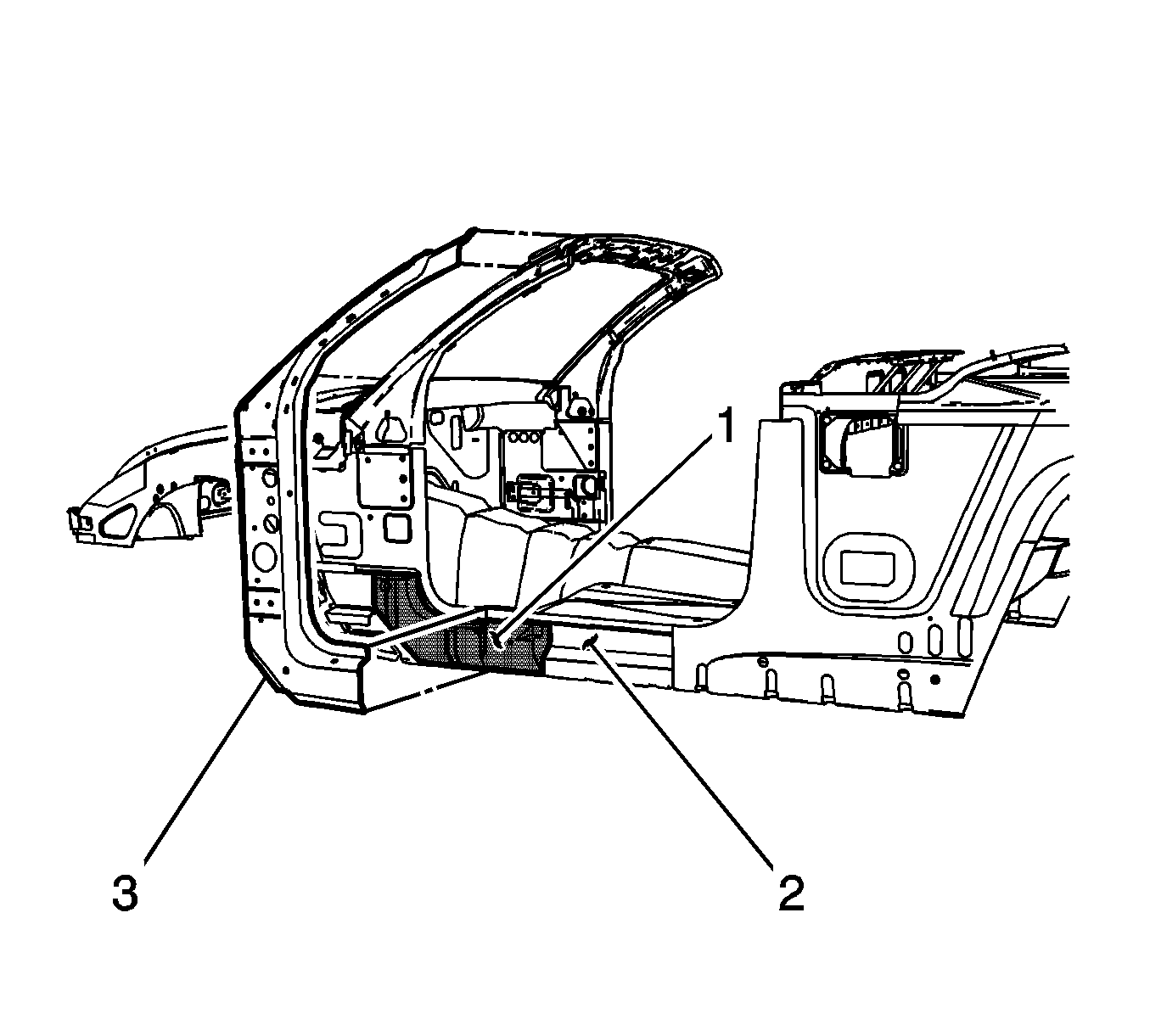
Important: Structural foam (1) is located between the inner rocker (2) and the inner hinge pillar reinforcements (3) on both the right and the left side of the vehicle. Precast structural foam replacement blocks are available if necessary, and can be ordered separately.
Failure to replace any damaged structure foam reinforcement as described could compromise the structural integrity of the vehicle. Refer to Structure Foam Replacement .- Disable the SIR system. Refer to SIR Disabling and Enabling in SIR.
- Disconnect the negative battery cable. Refer to Battery Negative Cable Disconnection and Connection in Engine Electrical.
- Remove all related panels and components including the upper fender rail. Refer to Front Fender Upper Rail Replacement or to Front Fender Upper Rail Sectioning .
- Repair as much of the damage as possible to factory specifications. Refer to Door Opening and Windshield Opening Dimensions in Dimensions - Body .
- Note the location and remove the sealers and anti-corrosion materials from the repair area, as necessary. Refer to Anti-Corrosion Treatment and Repair in Paint and Coatings.
- Cut the rocker panel within the shaded area (1) where sectioning is to be performed.
- Locate and drill out all factory welds on the outer body side, forward of the sectioning cut location. Note the number and location of the welds for installation of the outer body side service part.
- On the passenger side only, use a grinder or equivalent to remove the MIG welds, as shown.
- Verify the existence of structural weld-through adhesive. Refer to Structure Adhesive Identification . If necessary use a chisel to separate the body side section from the adjacent panels.
- Remove the damaged side panel section.
Caution: Refer to Approved Equipment for Collision Repair Caution in the Preface section.
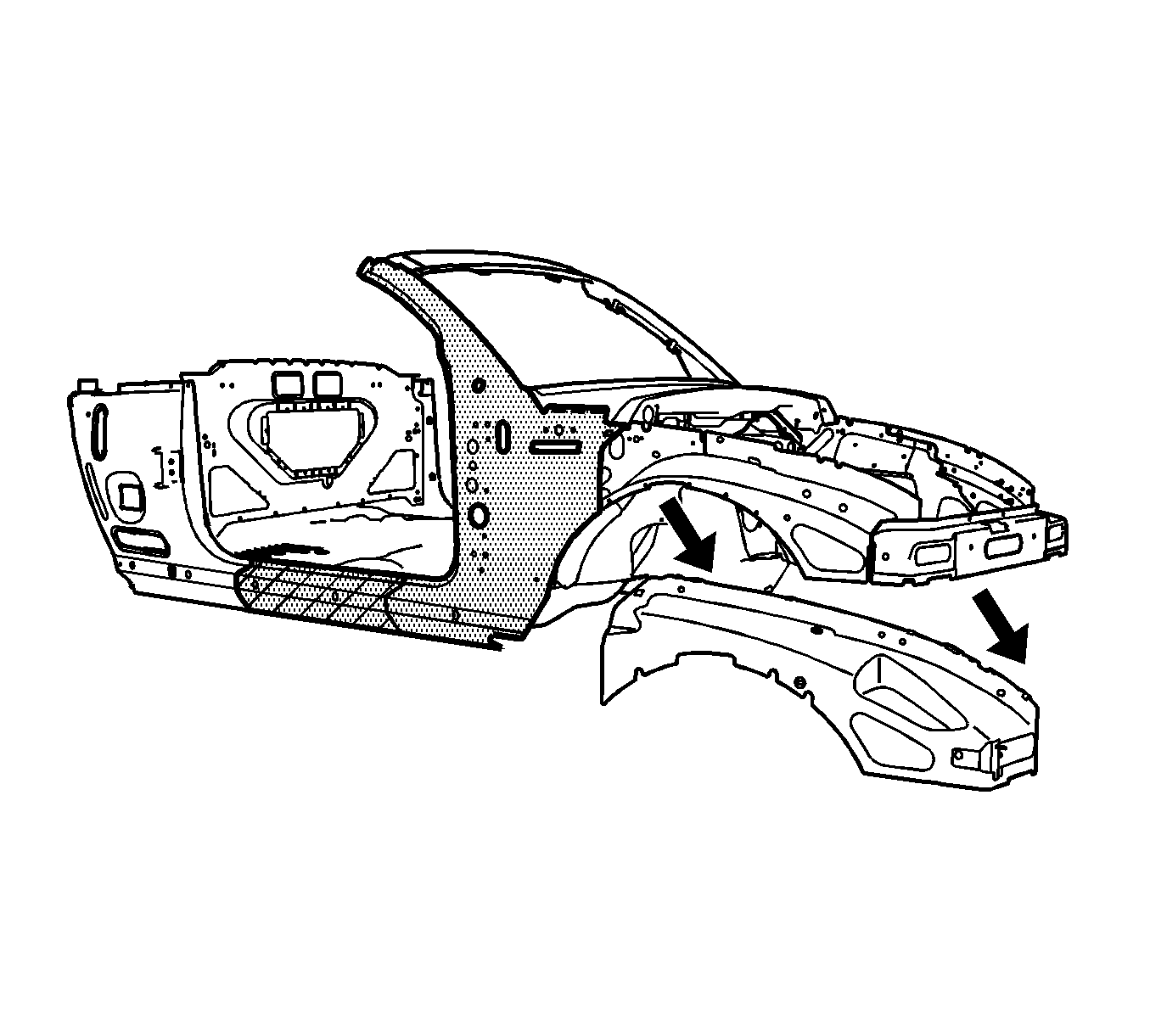
Important: When replacing the front section of the outer body side assembly, first remove the upper fender rail. Depending on the extent of the damage, you may section the upper fender rail in the designated area, or replace the entire rail.
Caution: Refer to Foam Sound Deadeners Caution in the Preface section.

Important: Do NOT damage the inner panels or the structural foam reinforcement block.

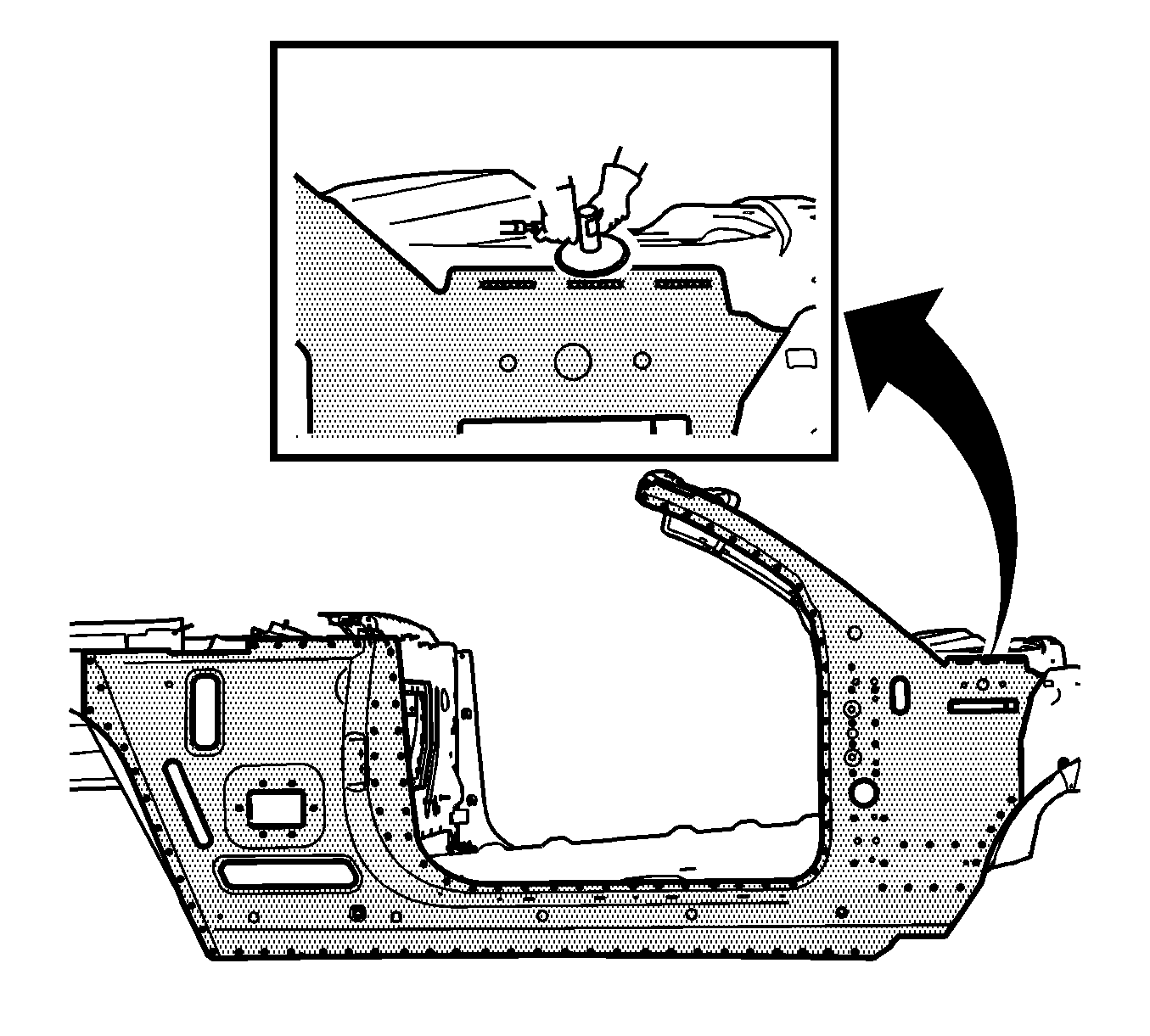
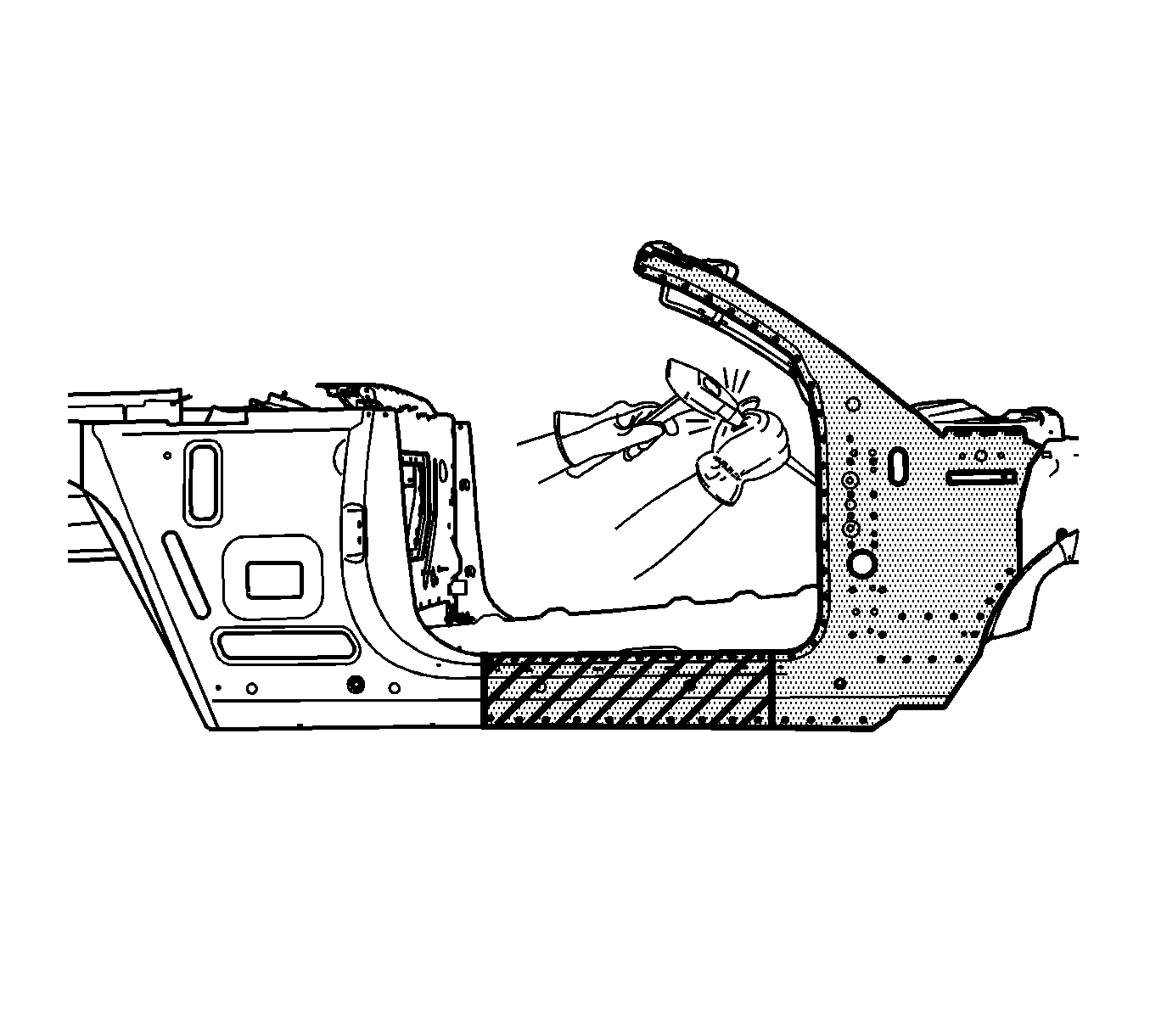

Important: Do NOT damage the structural foam reinforcement block when you remove the side panel section.
Installation Procedure
- Cut the replacement body side section in corresponding locations to fit the original panel. The sectioning joint should be trimmed to allow 1½ times the metal thickness at the sectioning joint.
- Create a 100 mm (4 in) backing plate (A) from the unused portion of the service part. Trim the backing plate as necessary to fit behind the sectioning joint.
- Drill 8 mm (5/16 in) plug weld holes in the service part as necessary in the locations noted from the original panel and along the sectioning cut.
- Replace the structural adhesive with an additional plug weld between the existing plug welds where necessary.
- Drill 8 mm (5/16 in) plug weld holes along the sectioning cut on the remaining original part. Locate these holes 25 mm (1 in) from the edge and spaced 40 mm (1½ in) apart.
- Prepare all attachment surfaces as necessary.
- Apply 3M® weld-thru coating P/N 05916 or equivalent to all mating surfaces.
- Fit the backing plate halfway into the sectioning joint, clamp and plug weld to the vehicle.
- Inspect the structural foam for damage and replace the foam if necessary. Refer to Structure Foam Replacement .
- Position the body side section. Refer to Door Opening and Windshield Opening in Dimensions - Body .
- Plug weld accordingly.
- Stitch the weld sectioning joint.
- On the passenger side, continuous MIG weld the 3 slots as shown.
- Install all related panels including the upper fender rail. Refer to Front Fender Upper Rail Replacement or to Front Fender Upper Rail Sectioning .
- Clean and prepare all welded surfaces.
- Apply the sealers and anti-corrosion materials to the repair area, as necessary. Refer to Anti-Corrosion Treatment and Repair in Paint and Coatings.
- Paint and repair the area. Refer to Basecoat/Clearcoat Paint Systems in Paint and Coatings.
- Install all related components.
- Connect the negative battery cable. Refer to Battery Negative Cable Disconnection and Connection in Engine Electrical.
- Enable the SIR system. Refer to SIR Disabling and Enabling in SIR.
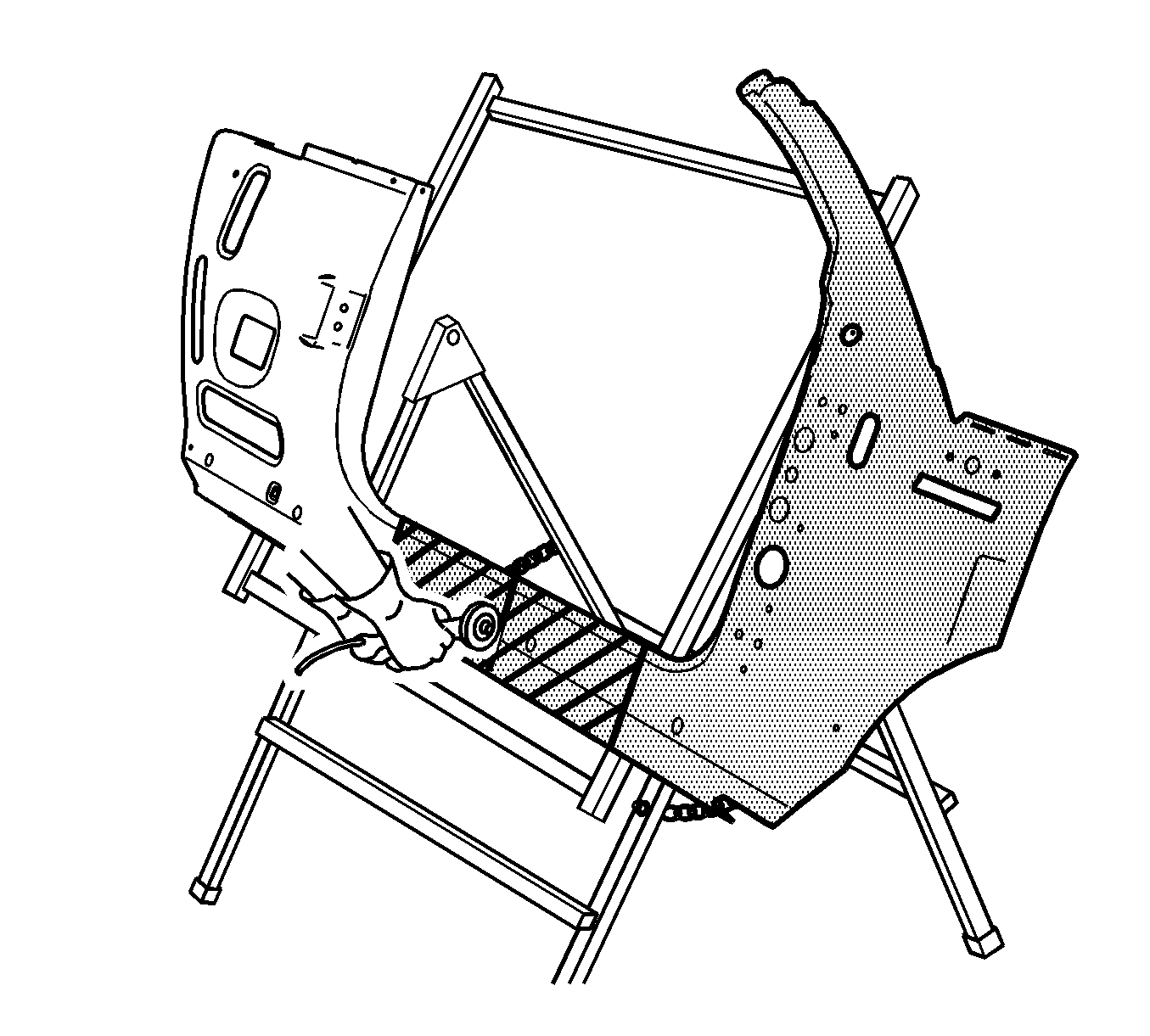
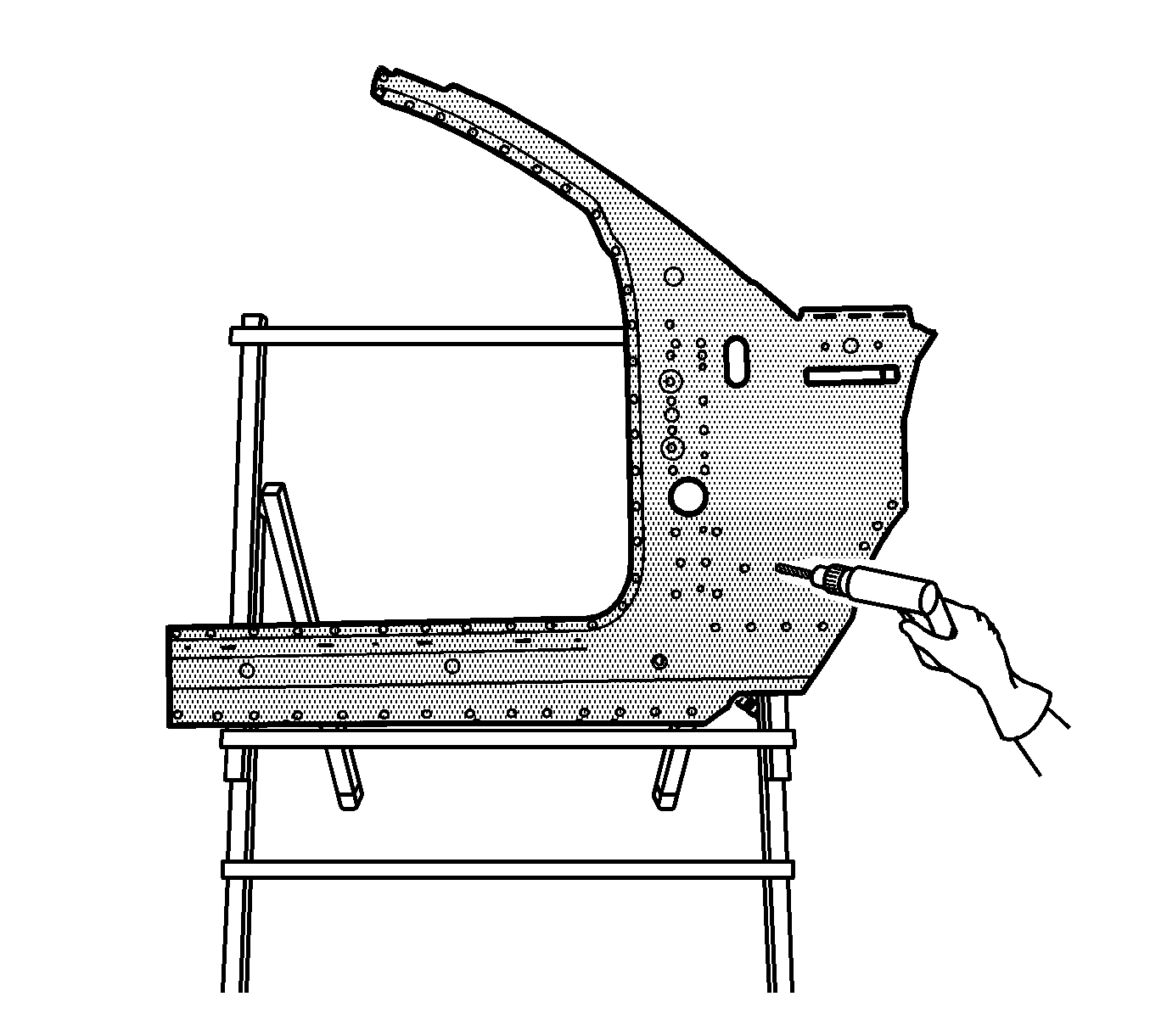
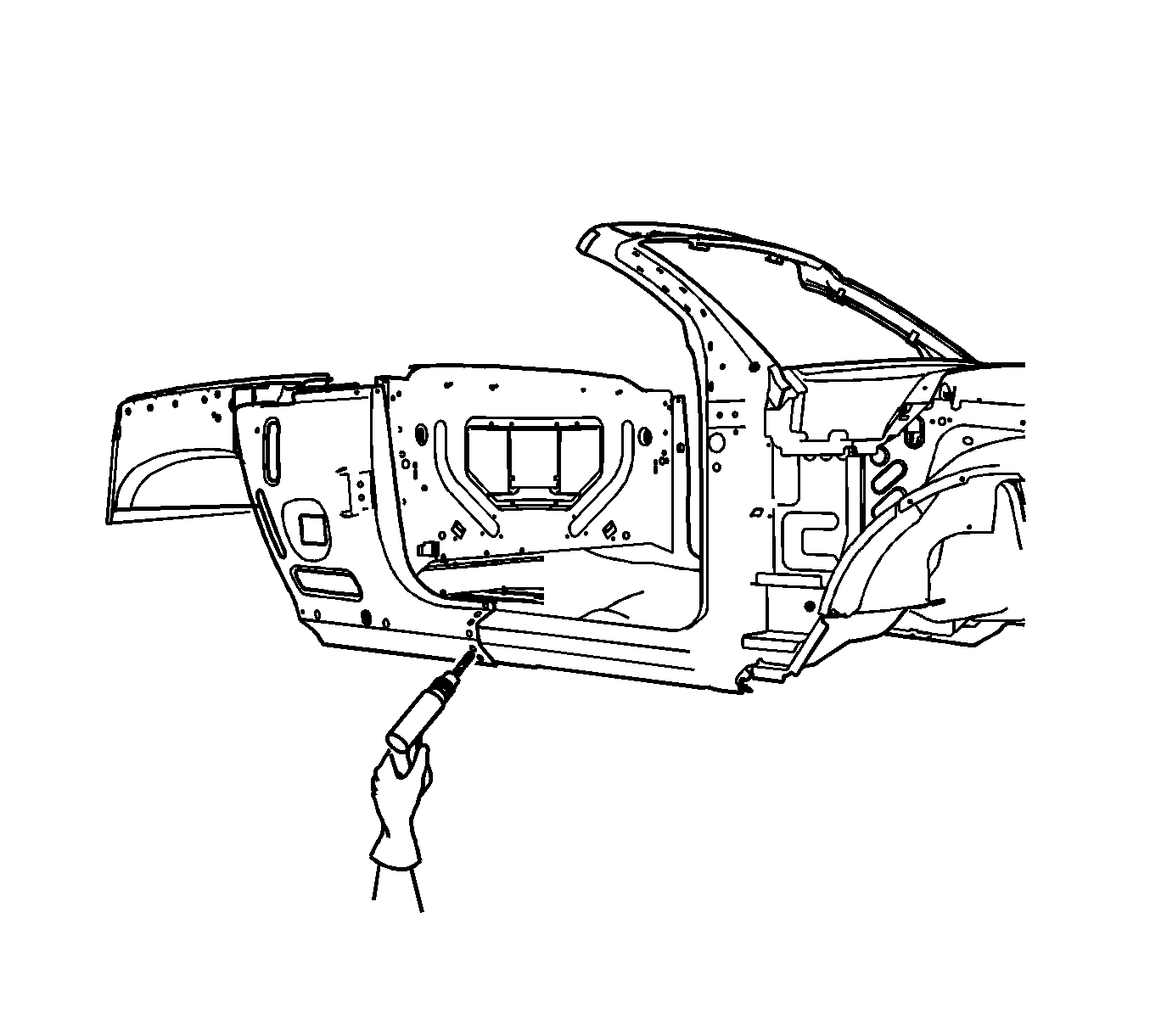

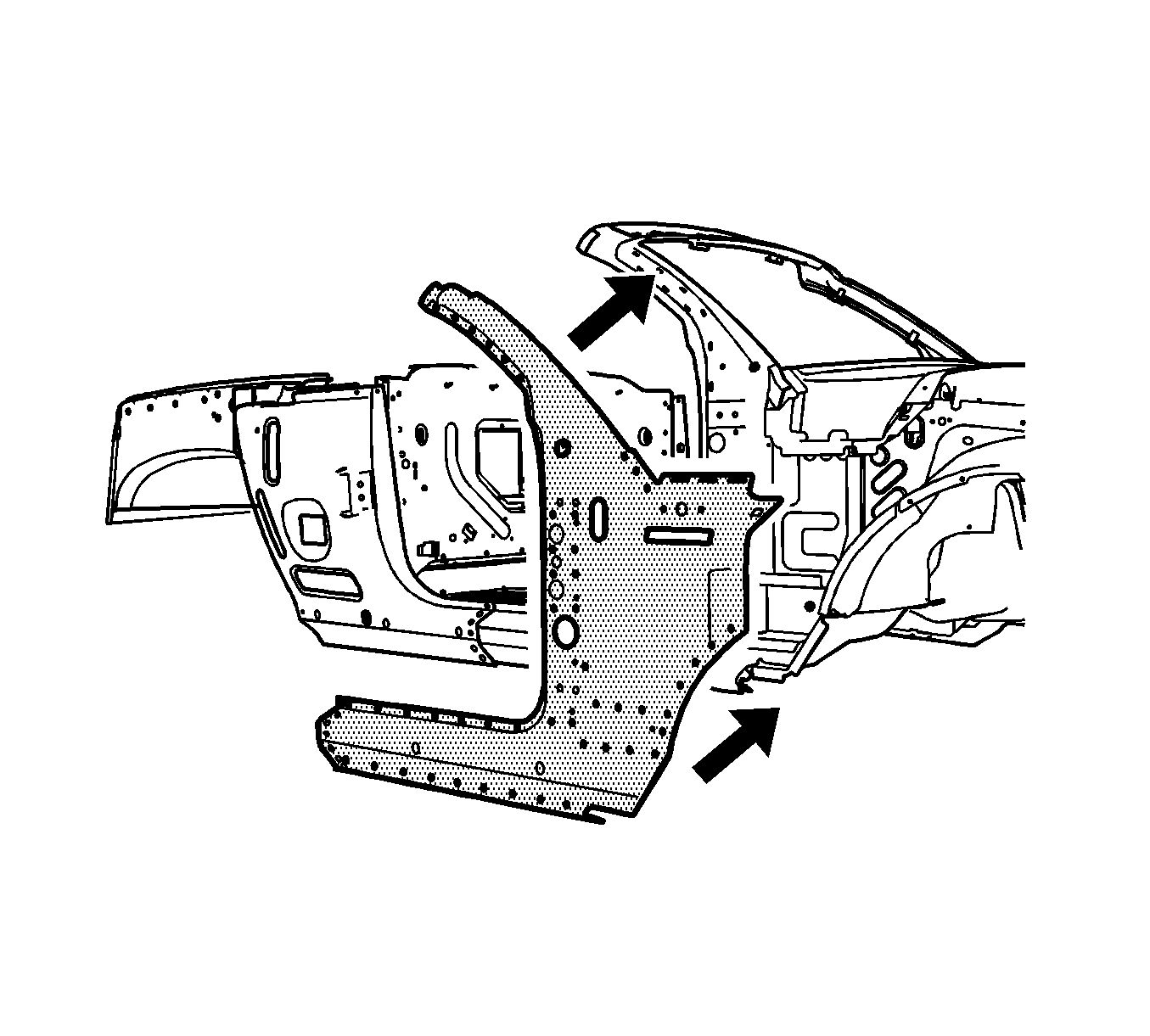

Important: To create a solid weld with minimum heat distortion make 25 mm (1 in) stitch welds along the seam with 25 mm (1 in) gaps between them. Then go back and complete the stitch weld.
